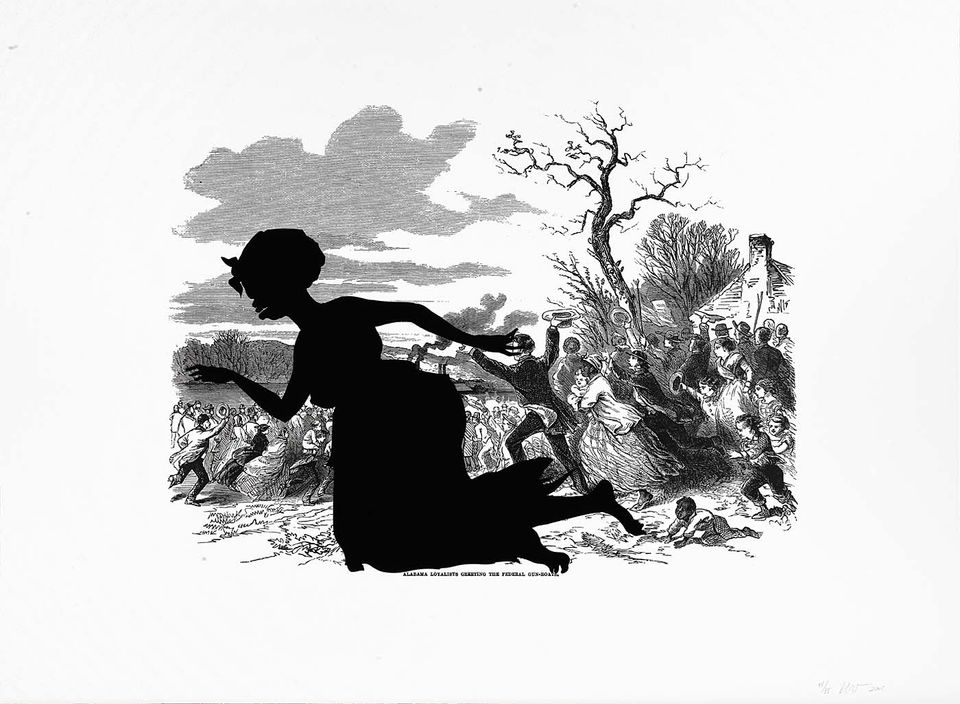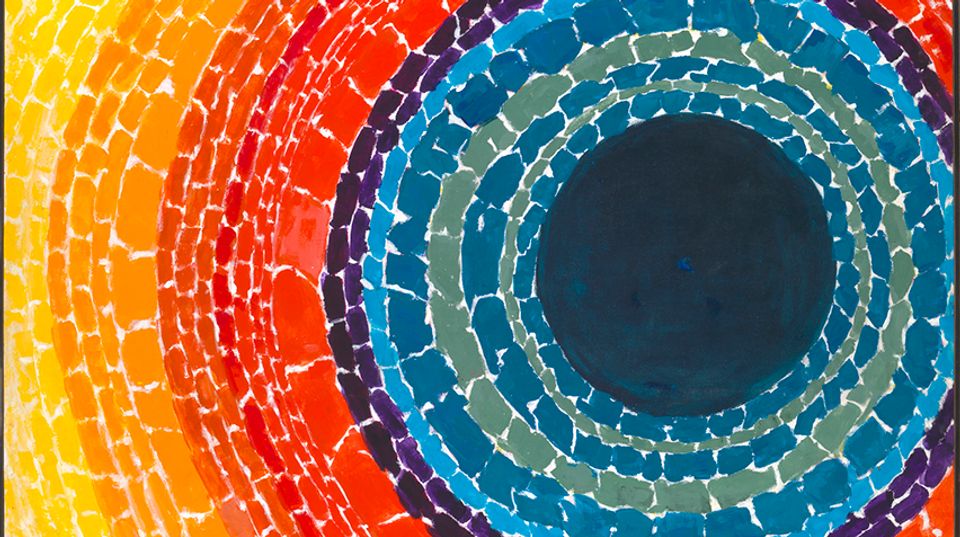
Kara Walker, Alabama Loyalists Greeting the Federal Gun-Boats, from the portfolio Harper’s Pictorial History of the Civil War (Annotated), 2005

Some topics are difficult to discuss. Art makes these tough conversations easier by contextualizing the issue and making us look at challenging topics with fresh eyes.
Kara Walker’s series Harper's Pictorial History of the Civil War (Annotated), currently on view at SAAM through March 11, and Spike Lee’s 2000 film Bamboozled, are two great examples of how art has the power to tackle sensitive and important matters. Although these works are very different, they explore similar things: history, race, gender, and stereotypes.
Kara Walker takes Civil War cartoons from Harper's magazine, originally published in 1866, and inserts silhouettes of caricatures of African Americans that reflect racial and gender stereotypes. Her work is a play of misrepresenting misinterpretation. She explained it best when she said, “Challenging and highlighting abusive power dynamics in our culture is my goal; replicating them is not.” Her silhouettes remind us how historic cartoons are steeped in stereotypes that have plagued our history, and how they continue to linger in our culture today.
Award-winning director Spike Lee tackles these same issues in Bamboozled. The film is set in a modern day cable TV network, where a program executive creates a blackface variety show set in a watermelon patch on an Alabama plantation. Despite its shocking and offensive material, the show is a hit. Lee’s commentary on the history of minstrelsy is unconventional, but perhaps that is why the film grabs our attention. This film asks its viewers many questions, such as what is “blackness”, where does it originate, and have we really overcome damaging stereotypes?
Regardless of medium, art has a powerful way of communicating complicated issues and questions. Kara Walker and Spike Lee are among the most relevant artists of our time because they are not afraid of asking tough questions. The conversations they spark are not only relevant to history, but are necessary to the present. Lee once said, “It comes down to this: black people were stripped of our identities when we were brought here, and it’s been a quest since then to define who we are.”
Ask your own challenging questions on February 3 pm in the McEvoy Auditorium where Movies at SAAM will be screening Bamboozled. There will also be a post-film discussion with Professor Marcia Chatelain, Professor of History and African American Studies at Georgetown University. After the show check out Kara Walker’s Harper's Pictorial History of the Civil War (Annotated) on the second floor.
Want to know more about Kara Walker's work? On Tuesday, February 6 at 7 pm, join Deborah Willis, professor and chair of the Department of Photography & Imaging at NYU’s Tisch School of the Arts. She'll discuss Walker’s provocative work in a talk entitled, The Resonance of the Archive: Civil War Imagery in Contemporary Art.
Ryan Linthicum is the MacMillan Education Center Coordinator and runs the film series, Movies at SAAM.



















